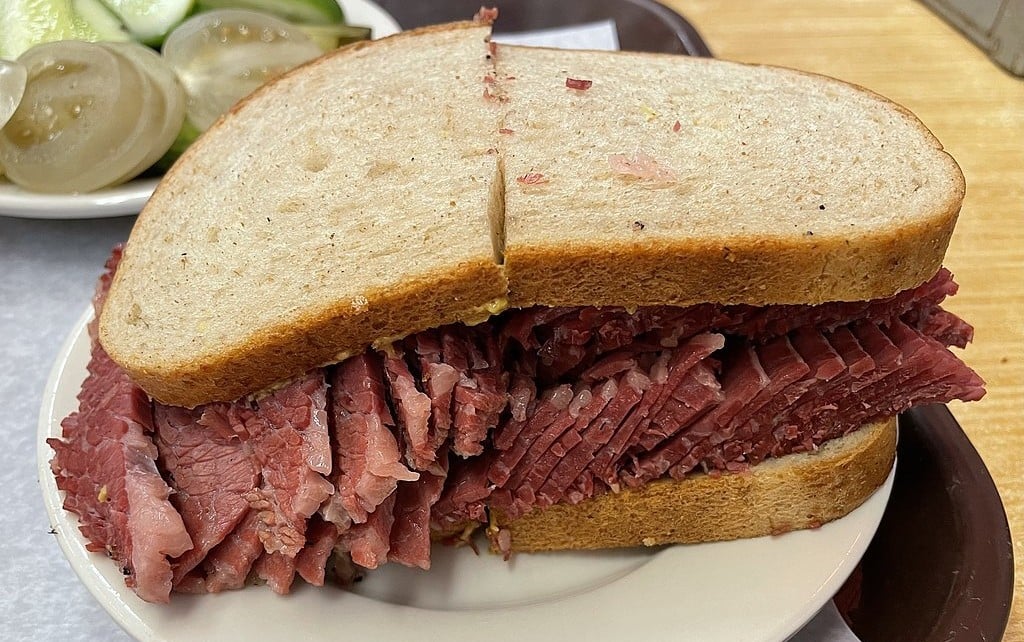We’ve all been there: staring into the fridge, looking for a quick and easy protein to slap on a sandwich or toss into a pan. Often, our hands land on convenient packs of bacon, deli slices, or sausages. But according to health experts, these convenient choices might come with a hidden cost to our long-term health.
The World Health Organization classified processed meats as Group 1 carcinogens back in 2015—placing them in the same evidence category as tobacco and asbestos, though with significantly different levels of risk. Harvard Health confirms: “Processed meats are among the least healthy foods you can eat.”
The evidence is pretty solid. Research shows that eating just 50 grams of processed meat daily (about one small hot dog) increases colorectal cancer risk by 18%. The main culprits are nitrates and nitrites, which can form cancer-causing compounds called nitrosamines in the body, along with high levels of sodium and saturated fats.
Before you start panicking about that occasional bacon cheeseburger, here’s some perspective: the research doesn’t suggest you need to eliminate these foods entirely. The increased cancer risk comes from regular, daily consumption over time—not from having a hot dog at the baseball game or bacon with Sunday brunch. Even the researchers behind the major studies emphasize that it’s about frequency and quantity, not complete avoidance. Think of it like alcohol or dessert—fine in moderation, but probably not something you want every single day.
On that note, here are eight ultra-processed meats to avoid, along with some alternatives you can use instead.
Bacon

The Lowdown: Bacon’s irresistible sizzle and salty crunch make it a breakfast icon, but it’s a trifecta of health concerns. It’s typically cured with a high concentration of salt and nitrates. To top that, it’s loaded with saturated fat, and cooking it at high temperatures (such as frying) can create additional harmful compounds.
Healthier Alternative: For a similar smoky flavor, try strips of tempeh or mushrooms marinated in soy sauce, liquid smoke, and maple syrup, then pan-fried until crisp. If you want to stick with meat, turkey bacon, although it is high in sodium, is often lower in fat and calories. The key is to check the label for the lowest sodium content and enjoy it in moderation, as it is processed as well.
Ham

The Lowdown: Whether it’s the centerpiece of a holiday dinner or thinly sliced for a sandwich, ham is preserved through a heavy-duty curing process involving large amounts of salt. This makes its sodium content sky-high, which is a major contributor to high blood pressure.
Additionally, ham typically contains preservatives such as nitrates and nitrites to maintain its color and prevent bacterial growth, which have been linked to an increased risk of cancer by health organizations. Glazed hams also pack a surprising amount of added sugar.
Healthier Alternative: Instead of pre-packaged ham, buy a fresh pork loin or tenderloin. Roast it at home with your own blend of herbs and spices, then slice it thin. You get a delicious, savory flavor with a fraction of the salt and zero preservatives.
Hot Dogs

The Lowdown: The ballpark classic is a true culinary enigma—and not in a good way. Hot dogs are often made from an emulsified slurry of meat trimmings (pork, beef, chicken, or a mix), then pumped full of preservatives, flavorings, and sodium nitrate to give them that signature taste and pinkish hue. They are the definition of an ultra-processed food.
Healthier Alternative: Opt for nitrate-free chicken or turkey sausages from a reputable brand that uses whole meat and visible spices. However, it’s essential to note that while the “nitrate-free” label may sound healthier, these products typically use natural sources, such as celery powder. The resulting nitrate and nitrite levels are often just as high, and sometimes even higher, than those in conventional hot dogs.
For a plant-based swap, many modern veggie dogs made from pea or soy protein offer a surprisingly satisfying bite.
Sausages

The Lowdown: From breakfast links to Italian sausages, these products are typically high in sodium and unhealthy saturated fats. To bind the ground meat and fat together, manufacturers often use a variety of fillers and preservatives. While some fresh sausages from a local butcher might be better, most mass-produced, pre-packaged versions are best avoided.
Healthier Alternative: Look for lean, fresh ground chicken or turkey. You can easily make your own breakfast patties by mixing the ground meat with sage, thyme, black pepper, and a pinch of salt.
Deli Meats / Cold Cuts

The Lowdown: That seemingly innocent pile of turkey or roast beef behind the deli counter is often a trap. To keep them fresh and appealing for days, cold cuts are injected with solutions containing sodium, flavor enhancers, and preservatives, such as sodium nitrite. They are a primary source of sodium in many people’s diets.
Healthier Alternative: The best swap is to cook a whole chicken or turkey breast at the beginning of the week. Slice it up for sandwiches, salads, and wraps. Canned tuna or salmon (packed in water) are also excellent, protein-rich alternatives.
Pepperoni

The Lowdown: Pizza’s favorite topping gets its zesty flavor and characteristic red color from a process of curing, fermenting, and air-drying. This process concentrates everything—the fat, the salt, and the nitrates—into a small, delicious, but potent package. Just a few slices can significantly bump up your daily intake of sodium and preservatives.
Healthier Alternative: Top your pizza with roasted red peppers, sun-dried tomatoes, or grilled mushrooms for a savory, umami flavor. If you need a meat fix, try some shredded rotisserie chicken or crumbles of lean ground turkey.
Corned Beef

The Lowdown: This Irish-American, St. Patrick’s Day favorite gets its name from the “corns” of rock salt used in the brining process. The beef brisket is soaked for days in a saltwater solution packed with spices to cure it. While delicious, this method results in an extremely high sodium content.
Healthier Alternative: For a similar hearty meal, slow-cook a fresh beef brisket with cabbage, carrots, and potatoes, using low-sodium beef broth and herbs like bay leaves and thyme for flavor instead of a salt brine.
Beef Jerky or Meat Sticks

The Lowdown: While traditional jerky is simply processed meat (NOVA Group 3), most commercial brands cross into ultra-processed territory, incorporating industrial additives such as corn syrup, MSG, hydrolyzed proteins, and artificial flavors into the mix.
What Makes It Ultra-Processed: Look for ingredient lists that include more than just beef, salt, and basic seasonings. Some brands contain corn syrup solids, maltodextrin, and flavor enhancers, which categorize them as Group 4.
Healthier Alternative: Roasted chickpeas or edamame offer a crunchy, savory, and high-protein snack option. You can also make your own jerky at home using a dehydrator or oven, where you control the sodium content and eliminate preservatives.
Important Context: While ultra-processed commercial jerky should be limited, traditional-style jerky made with minimal ingredients can be different. Even basic processed jerky provides complete protein (11g per ounce) and nutrients like iron and B vitamins. The key distinction: Look for jerky with simple ingredient lists rather than commercial brands loaded with industrial additives. Clean jerky options can be part of a healthy diet when consumed in moderation (no more than 3 times per week, according to nutrition experts).

